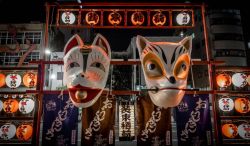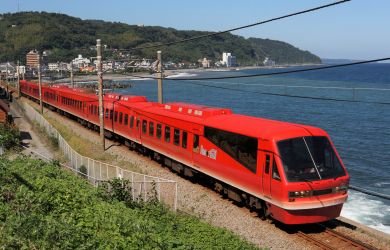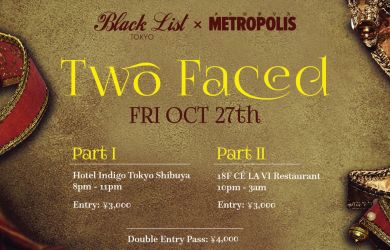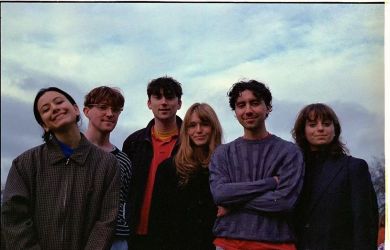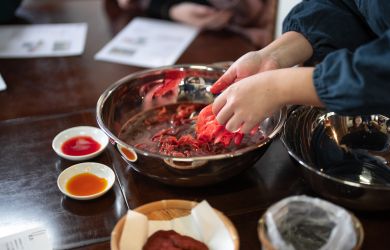
January 25, 2019
A Tale of Two Confectioners
Metropolis explores two very different masters of chocolate
Let’s get to the real stuff — chocolate. Everybody loves it, largely because there’s a flavor out there for everyone. No matter your preference or dietary restriction, there’s something for you. In light of Valentine’s Day, Metropolis decided to look into the process of producing chocolate, which is surprisingly little-known. Additionally, we spoke to two of Japan’s most loved chocolatiers, Le Chocolat Alain Ducasse (LCAD) and Black Thunder. We chose these two companies because they satisfy drastically different but equally prominent cravings for chocolate lovers.
Alain Ducasse
Le Chocolat Alain Ducasse manufactures its chocolate for the Japanese market in a beautiful corner cafe in Nihombashi, wherein the entire workshop can be viewed. Executive Chef Julien Kientzler presides over a personally-trained staff, who work scrupulously to create the visually stunning and curiously flavorful products that have landed LCAD a spot on the world stage for best chocolate. The chocolatier also has sister shops in Roppongi and Nihombashi Takashimaya, though we highly recommend a visit to the workshop to view the mesmerizing process that makes Le Chocolat Alain Ducasse’s products so revered.
Metropolis: Can you give us some tips about how to taste chocolate?
Julien Kientzler: To taste chocolate, you have to be in a quiet place or a relaxing place… You have to be very relaxed. First you have to smell the chocolate. Then, you can take a little bit and keep it in your mouth. First the acidity or bitterness will come and then the other flavors, after a few seconds, will come. This is important — the chocolate has to be in a good temperature. Not from the freezer or the fridge, this is not good. The chocolate should be at 15 degrees or 20 degrees (Celsius) … You can store it in the fridge if you have no choice, but before tasting it’s better if you leave it out first. If you eat cold chocolate… the cold isn’t good for the chocolate flavor.
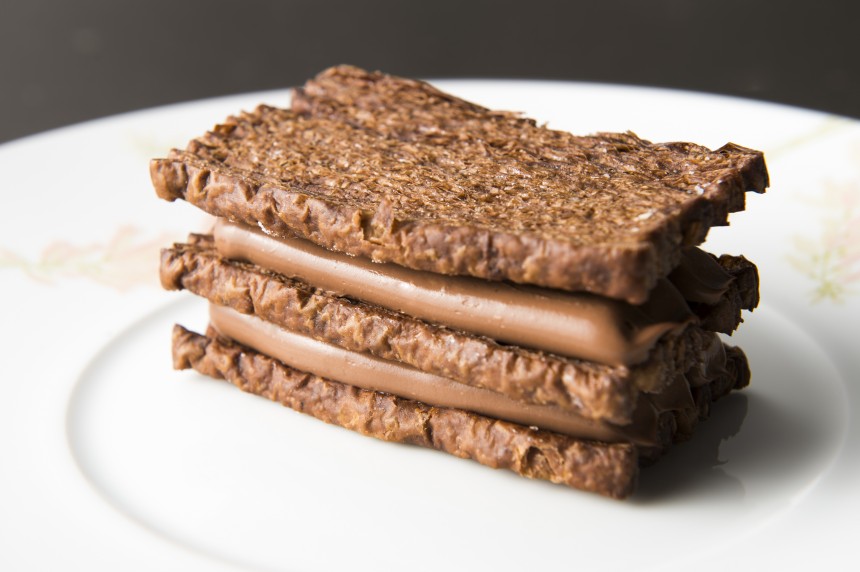
M: Is it very difficult to become an executive chocolatier?
JK: Chocolate work takes a long time with some experience, you need to fill in the chocolate product, you need to test a lot of things. It’s very different work from pastry work or working in a restaurant, also. When I was starting with pastry, 20 or 22 years [ago], I was also making chocolate. So during my career I was always working with chocolate, keeping my mind there all the time.
M: In the realm of cafes in France, or chocolate shops in France, how long does it usually take to become an executive chef?
JK: It can take a long time… 10 years, 15 years. It’s different for everyone, some people can be good fast — other people, it takes a long time. But yeah, for my feeling, the minimum to be chef, you have to wait 10 years. You have to work and learn a lot of things before thinking of becoming a chef.
M: Are there certain skills that would be advantageous for someone who wants to begin a career in chocolate?
JK: You have to love chocolate, first. This is the most important. You have to eat and taste a lot of chocolate all the time. After that, your chocolate work needs to be very meticulous, this is a very touchy product… for the temperature, for the fingerprints even. We ask the people who want to work here to be very meticulous.

There aren’t a lot of chocolate people in Japan so we have to learn a lot of things. But that’s why we made a factory in Japan. We want to learn and we want to share our skills with Japanese people.
M: What, for you, is the most important step in the process of making chocolate?
JK: Every step is important. If you make a mistake or if you miss something in a step, the product [quality] will go down, so every step from the roasting until the shop, every step is very important in the chocolate process.
M: Is there anything you’d like to say to our readers?
JK: We invite everyone to come to Roppongi or Nihombashi to visit us, to taste our chocolate and to share our passion of chocolate.
BLACK THUNDER
Black Thunder, reasonably priced and much-loved from school students to seniors, has been a favorite in the Japanese chocolate scene for years. The crunchy chocolate bar has rapidly gained popularity since a 2004 Japanese Olympian declared it a favorite, a fortunate accident for its creators, confectionery makers Yuraku Seika. Today, it can easily be found in any convenience store, but what makes it so unique is its continuous campaign to please the Japanese palate in its entirety, creating new variations that reflect regional delicacies, seasonal flavors and even Japanese moods. Frankly, we simply couldn’t resist a chance to meet Rumi Naito from Yuraku Seika’s marketing department to talk about a Metropolis favorite.

Metropolis: What led you (Yuraku Seika) to create Black Thunder?
Rumi Naito: Black Thunder was founded in 1994 and was selling Chocolate Nut 3, which is not on sale anymore. It had rice puffs and three different types of nuts with a very light texture. Unlike Chocolate Nut 3, the company wanted to create something with a heavier texture and that led us to create the Black Thunder that is sold today.
M: Do you have a single team that comes up with all these ideas, or is it regional?
RM: Currently, the marketing team and the development team in Toyohashi come up with the ideas mostly. But also the sales team shares inquiries and feedback from the shops, which aids the development team. The development team tries out different products then presents these at meetings for all of us to taste-test.
We also have an idea contest once a year where all the workers, from factory workers to accountants, can apply. Those who win have their ideas introduced in the office and then actually produced (for testing). Although these are not always sold in stores, the ideas and skills attained can be applied to other new products.

M: What we love about Black Thunder is that it doesn’t come in one flavor, there’s so many of them, with different products sold in different areas.
RM: Yes, those who collect all the types of Black Thunder find it difficult, but the factory in Toyohashi also offers a small store next to the factory where it sells the Hokkaido limited edition Black Thunder. We also offer the Pink Black Thunder [in our store here in Tokyo] as well.
M: What kind of process do you go through when introducing new products? It must take a long time to plan it in advance because you make so many of them.
RM: About six months before the products are sold, we start planning… but for the Valentine’s series, it takes a year. So after Valentine’s Day is over in 2018, we start planning for next year’s Valentine’s Day. The [Valentine’s] products are decided six months before and around December, we test if the products can be manufactured at the factory.
M: Have you had any failures or ideas that didn’t quite work?
RM: There are so many. There are so many ideas in my desk that have been in meetings, but rejected. There’s only five that will make it to the last selection and finally, we’re left with one which will be produced. The date for it to be sold is actually decided beforehand.
In the summer, we had Black Thunder: Salt and Vanilla, with a little more salt in it and we had peanut flavored ones as well. We also had the Kaki no Tane Thunder with Japanese rice crackers in it, creating a different type of crunchiness to regular Black Thunder. This fall, we collaborated with Ebizo Ichikawa and called it Ebizo Thunder (discontinued). He actually tried out many different flavors and chose his favorite out of all — milk chocolate made from France. This limited edition will actually be over soon. There is another limited edition only available in certain numbers in convenience stores — it has a hardened sweet potato powder inside it which makes the flavor strong. We also have another collaboration with Frugra (fruit granola), which has the same grains as Calbee’s Frugra that comes in a one-bite size series.
M: Would you say Japanese have different preferences for chocolate?
RM: What we thought was that Japanese people are more sensitive to texture. For example, there are so many types of textures of gummies in Japan — some are hard and chewy, and some are as if they are really fruits from the moment you bite them. The characteristic of having a crunchy texture is the most important part for Black Thunder, so we pay great attention to the amount of chocolate being blow-coated in the factory — there cannot be too much chocolate or too small an amount. That is why I think the texture of the crunchiness has widely attracted Japanese people. When it comes to people overseas, we are at a point in which we wonder if the texture of Black Thunder will draw them in.
